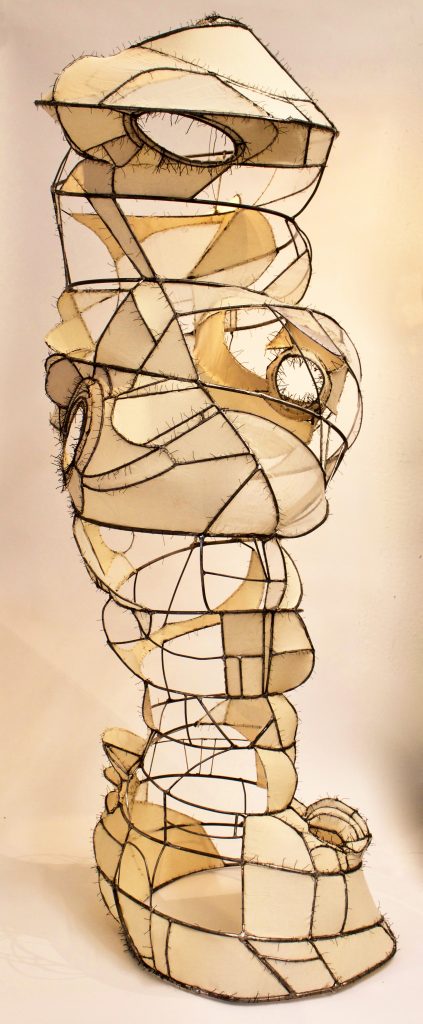
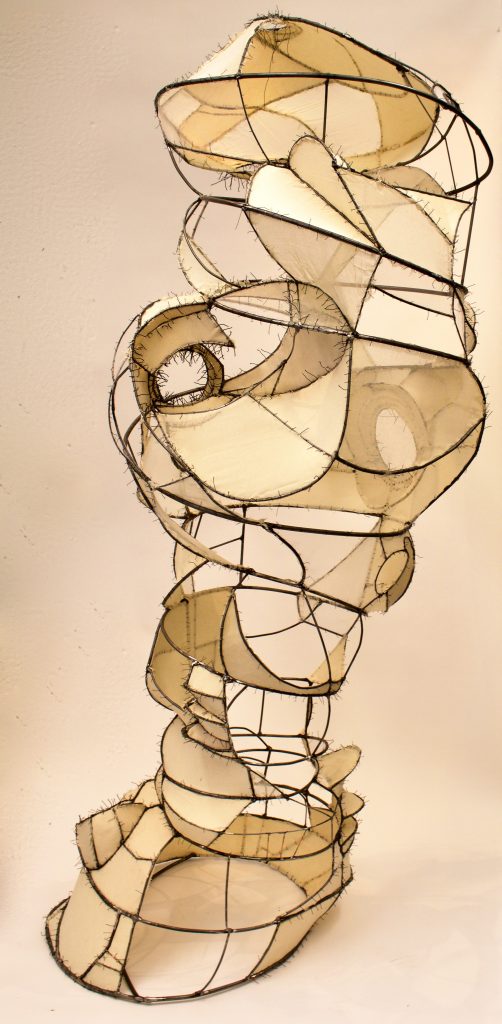
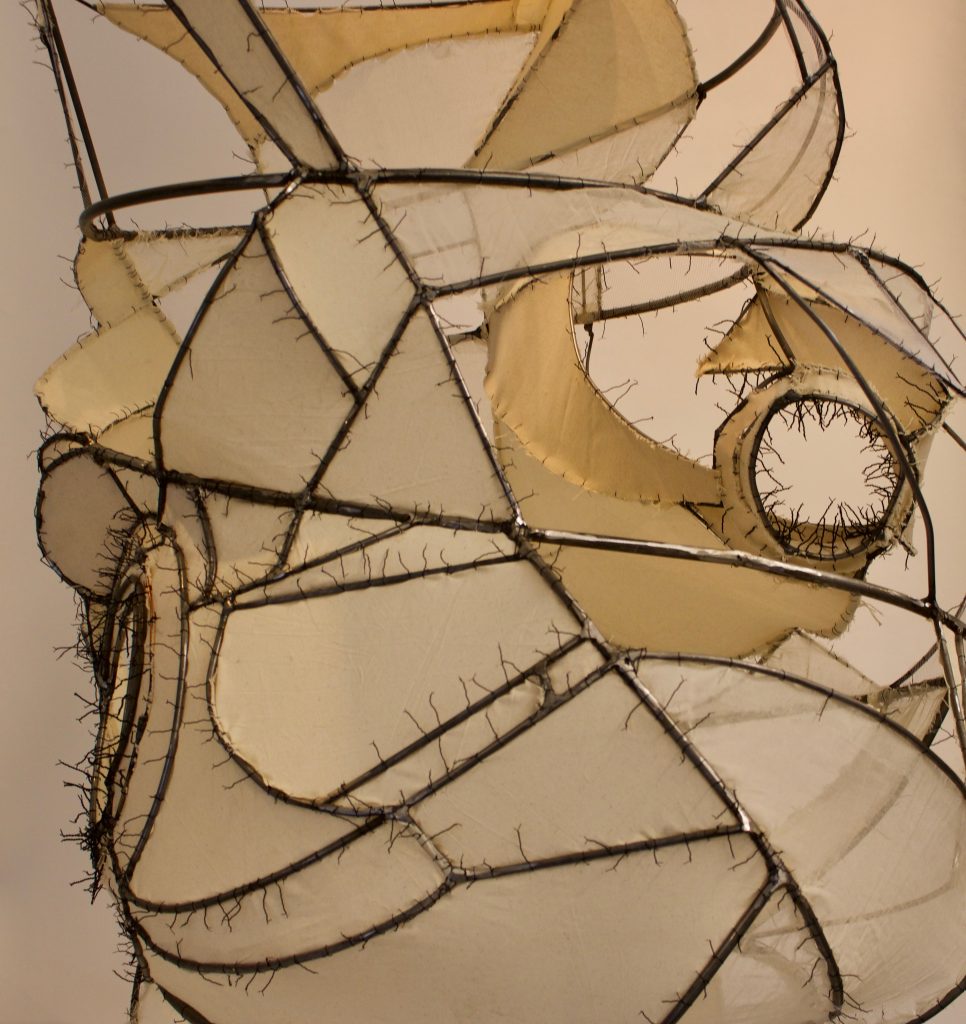
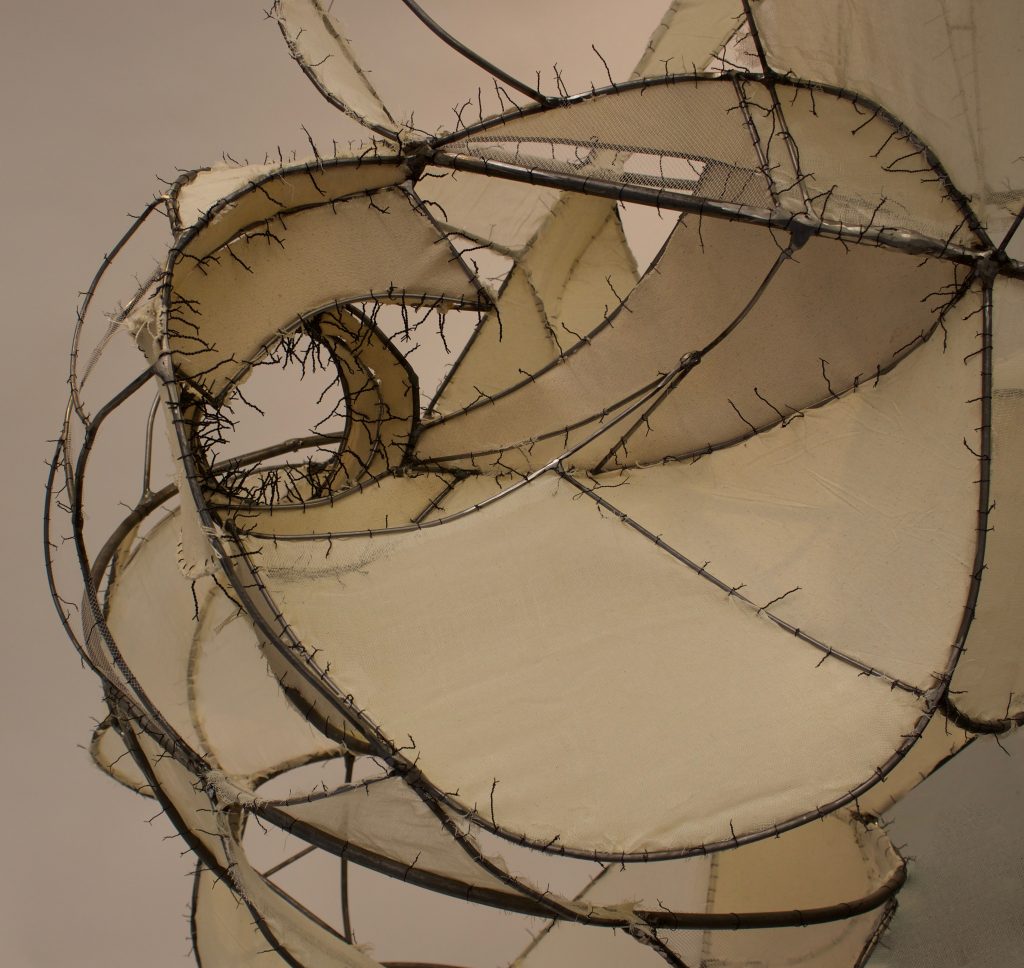
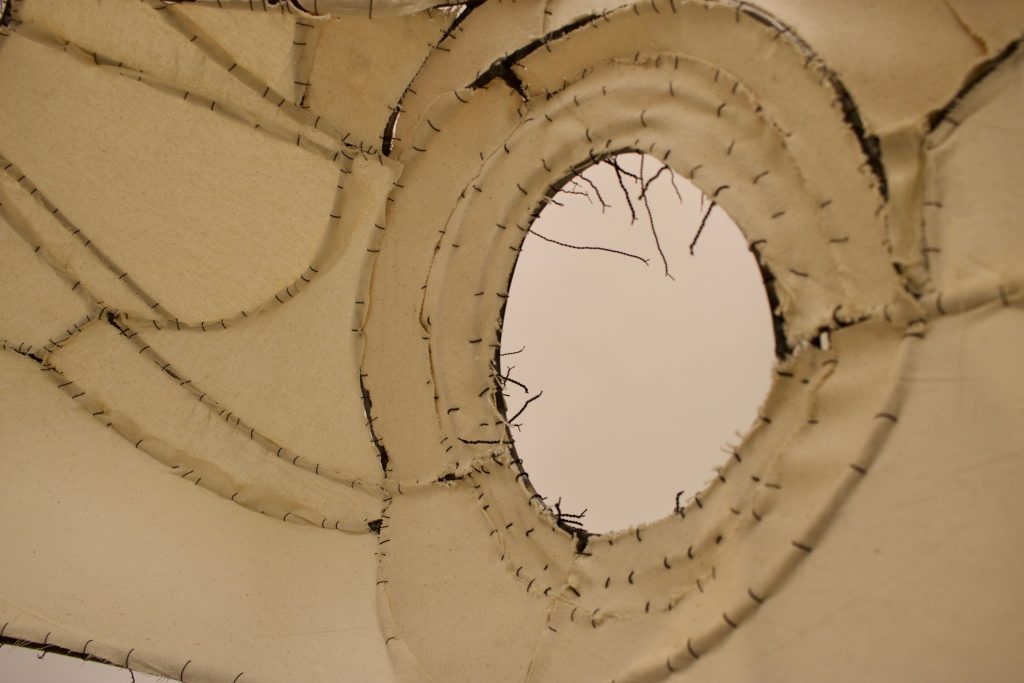
[Image description: The first two photographs of the artwork are two angles of the same sculpture or “3D collage” as the artist describes it, and the following three photographs zoom in on sculpture details. Supported by steel rods on the floor, an organic shape rises and forms around sections of steel armature. Patches of raw canvas and cheesecloth are stretched and stitched together with wires. Leaving sections of space or voids with no fabric, it’s reminiscent of welded sculptures by Lee Bontecou (b. 1931).]
—
lady
of the sutures,
wobbly to the touch,
she was anxiously stitched into a complicit soldier
for when time
would not
cleanse these wounds.
lady of the sutures is a body stitched together and made of raw canvas. Canvas is taught to be read as a neutral color, which furthers the association between paleness and neutrality, privileging and normalizing white dominance. Stitched together thousands of times, a bloody repetition stands wobbly, holding the potential to unravel, holding on desperately, but not indefinitely. A core steel spiral runs from the base to the top, representing the cyclical understandings of time within Judaism. This understanding contrasts the linear or inherently “progressing” narratives common in Christian and liberal perspectives on time and social change. As a material support for the transition of an open wound to a healed scar, sutures carry the power to resolve a trauma. When sutures are taken out too soon, when the work is declared done prematurely, the wounds reopen, fester, and scarring becomes worse. When sutures are left in too long, not only does the scarring become more and more prominent, but they can become buried within tissue, infected, and need to be dug out again.